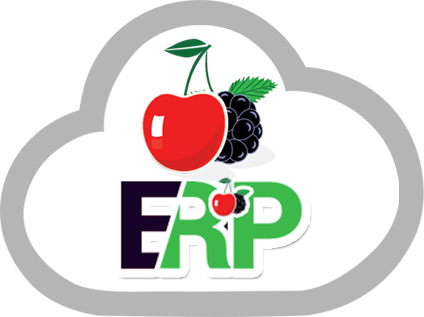
The Key Role of Grocery POS Systems – CherryBerry ERP
Grocery stores rely heavily on point-of-sale (POS) systems to run their operations efficiently. These specialised systems have become an indispensable tool for managing checkout, inventory, pricing, reporting, and more. This essay will examine the vital functions Grocery POS systems perform and how they benefit both retailers and shoppers.
Streamlining the Checkout Process:
One of the primary roles of a grocery POS system is to facilitate the checkout process. At its heart, the system consists of an electronic cash register that scans product barcodes, accepts various payment types, applies discounts and loyalty programs, and calculates the total cost of the transaction. From the shopper’s perspective, this results in faster checkout lines and more convenient payment options from debit and credit cards to mobile wallets. For the retailer, the automated process means fewer pricing errors, quicker transactions, and shorter customer wait times even during peak hours. The POS system also reduces the burden on cashiers by handling the computational work behind every order.
Centralising Data and Sales Analytics:
Beyond running transactions, grocery POS systems centralise data into one integrated system. Every time an item scans across the register, that product’s inventory levels update automatically. This gives store management real-time visibility into what products sell and at what volumes. The data empowers them to identify purchasing trends, optimise future orders, and reduce unnecessary food waste. Granular sales and traffic analytics also help managers make important staffing decisions to ensure adequate cashier and bagging coverage during rush periods. By leveraging the informative reporting available through POS software, grocers large and small can operate smarter stores.
Increasing Accuracy of Pricing and Orders:
Maintaining price accuracy has proven one of the most significant operational challenges in grocery retail. However, POS systems greatly increase pricing precision in several ways. Firstly, centralised price databases and digital price tags synchronised across the registers prevent inconsistencies that used to occur using paper tags. The systems also automate and streamline the process for weekly sales, discounts, and ad pricing. Additionally, advanced POS can interface directly with inventory management and ordering software. As stocks of a particular product run low, the connected system can automatically generate replenishment orders to the retailer’s distributors. This increases the accuracy of restocking and reduces instances of out-of-stocks. Together, these capabilities translate to a smoother, more positive shopping experience.
Implementing Customer Loyalty Programs:
Nowadays, grocery POS systems constitute far more than just digital cash registers. Many packages provide built-in capabilities for powering shopper loyalty programs tied to the point-of-sale. Retailers might offer rewards points for dollars spent, fuel discounts linked to grocery purchases, exclusive member-only sale pricing, and more. The POS system handles all the complex tracking, points accrual, and redemption functions behind every transaction. Not only does this foster repeat business, but the purchase data gathered through loyalty programs grants additional customer insights retailers can apply towards targeted marketing campaigns with personalised offers and sale pricing. The enriched shopper profiles translate to higher sales volumes and stronger brand loyalty – making investment in POS capabilities worthwhile.
The Next Generation of Innovation:
As technology continues advancing, so too will the grocery POS system and its role in stores. Emerging capabilities on the horizon include integration with mobile devices, expanded payment options leveraging cryptocurrency or instalment plans, video cameras to deter theft at self-checkout, and even AI to suggest purchases or substitutions for out-of-stock items. Some cutting-edge POS systems trialling now could recognize customers by face and link their purchase history to previous transactions all while applying loyalty discounts. While some advances might seem years away from mainstream adoption, they offer but a glimpse into the ever-evolving nature of point-of-sale technology. Even five years from now, the POS is guaranteed to constitute an integral part of every grocery store shaping business operations and the overall shopper experience.
Conclusion:
As this essay outlines, point-of-sale software now forms the technological backbone of grocery stores driving greater efficiency. Grocery POS systems deliver process improvements that benefit both customers and retailers through each transaction. Streamlining checkout, centralising enterprise data, increasing pricing accuracy, building shopper loyalty, and introducing new innovations represent just some of the key benefits. With POS systems becoming an integral investment for retailers of all sizes, the technology looks positioned to keep Revolutionising grocery retail operations for years to come. Check CherryBerry ERP for more details.
